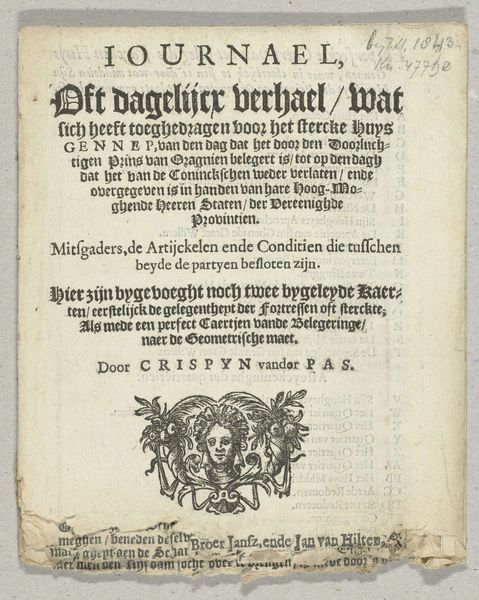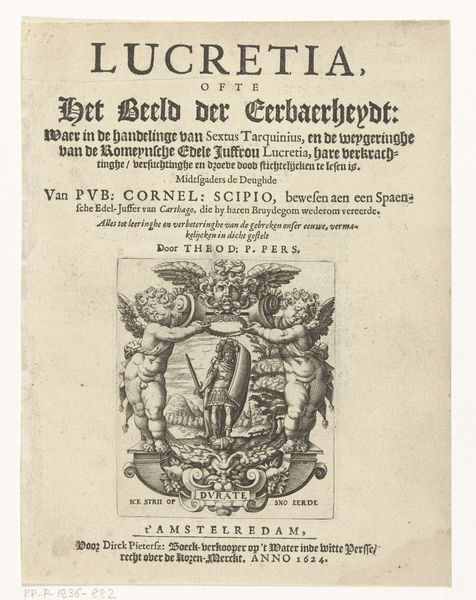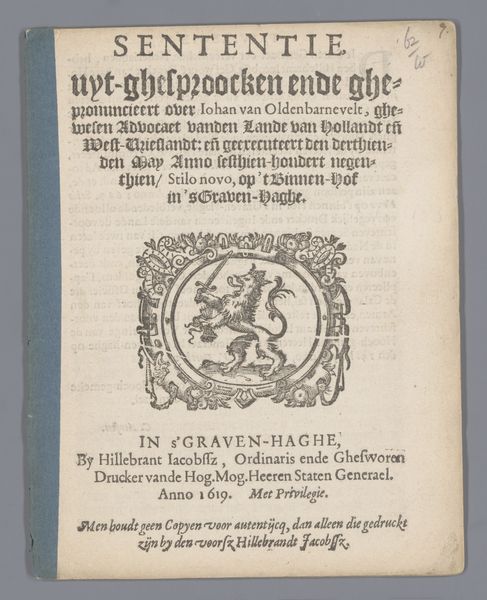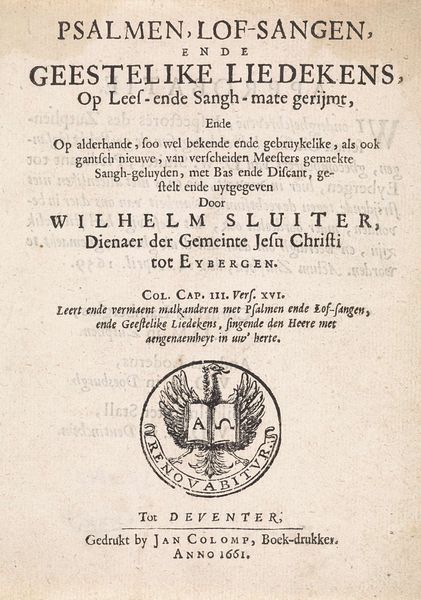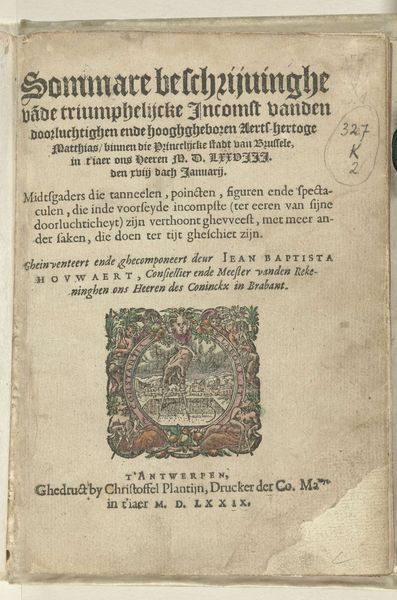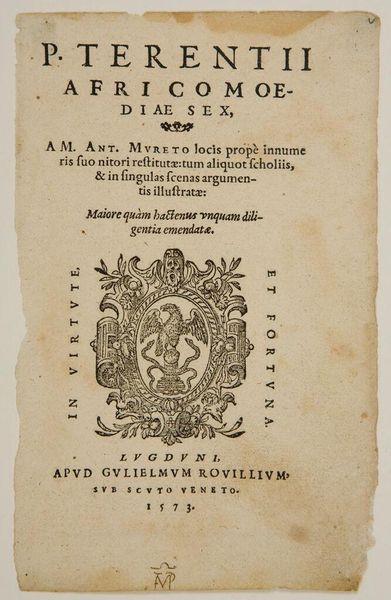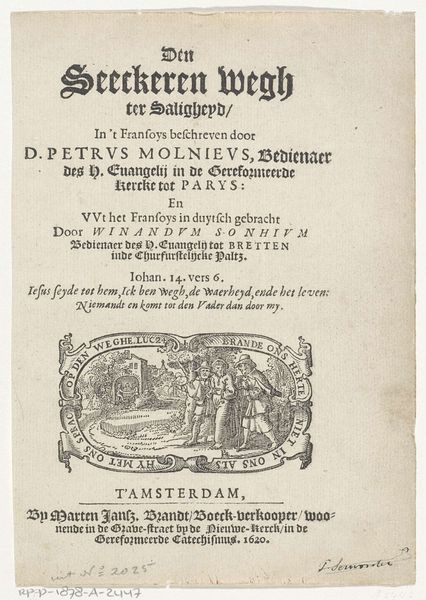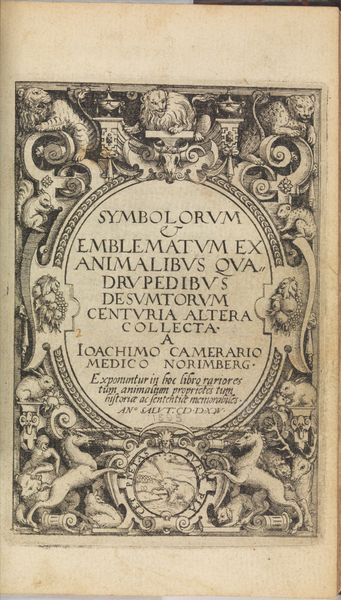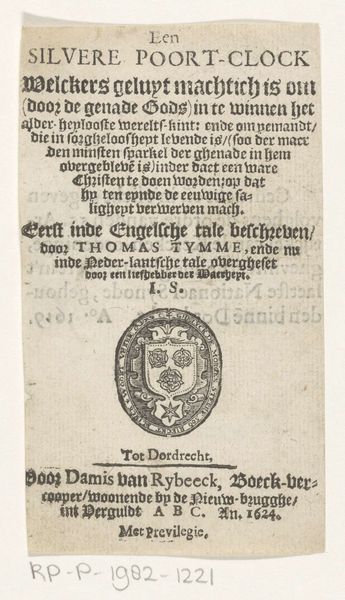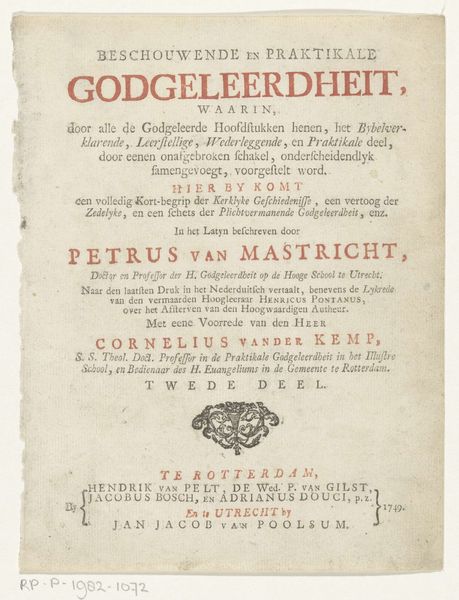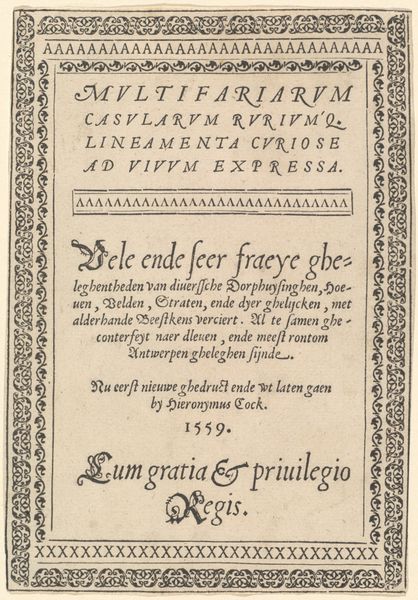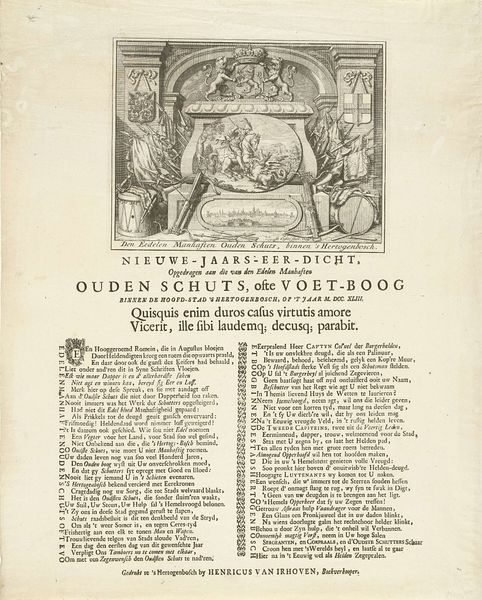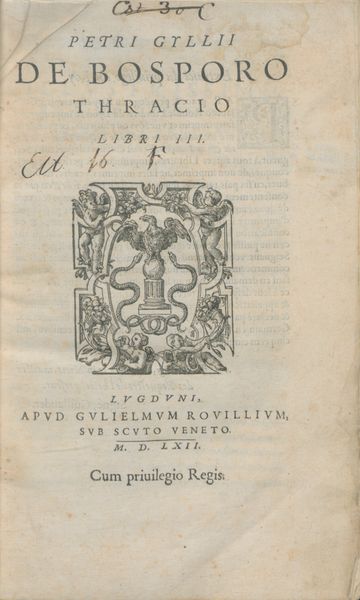
Octroy, by de Hoogh Mog. Heeren Staten Generael verleent aen de West-Indische Compagnie 1701
0:00
0:00
print, textile, paper, engraving
#
dutch-golden-age
# print
#
textile
#
paper
#
engraving
Dimensions: height 21.5 cm, width 16.5 cm
Copyright: Rijks Museum: Open Domain
This document, the Octroy by Paulus Scheltus, was printed in 1701 in the Hague, and it's all about power – both literally and figuratively. Consider the material: paper, made laboriously by hand at this time. It was a precious ground for the printed word. The dense, gothic typeface, pressed onto the page using a printing press, speaks to the Dutch Republic’s global reach. This isn’t just any text; it's an official decree from the States General to the West India Company. Note the lion rampant, emblazoned on the document with a sword. The document details the company’s monopoly on trade and colonization in the Americas. It sanctioned the exploitation of resources and people. So, while seemingly a simple piece of paper, the Octroy embodies the complex relationship between craft, power, and the making of empire. It reminds us that even the most everyday objects can be deeply implicated in systems of labor, politics, and consumption.
Comments
No comments
Be the first to comment and join the conversation on the ultimate creative platform.
